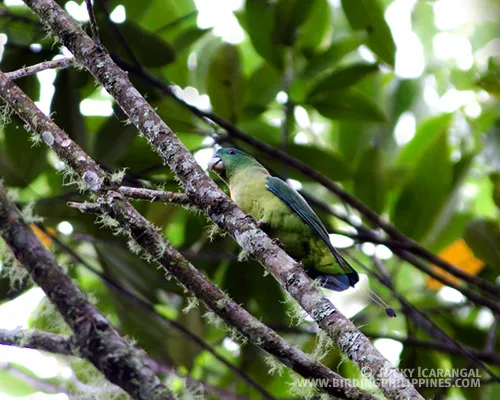
Montane Racquet-tail
Subspecies
| Genus | Species | subspecies | Region | Range |
| Prioniturus | montanus | OR | Philippines |
Genus
The taxonomy of racquet-tail parrots, genus Prioniturus, has been often revised with nine species recognised. Six species are endemic to the Philippines, of which three are threatened with extinction. Indonesia, with three species, is the only other country where Prioniturus occur. The island of Buru is home to a single endemic species that is classified as near threatened. The remaining two species, the Golden-mantled Racquet-tail P. platurus and the Yellowish-breasted Racquet-tail P. flavicans both occur on Sulawesi. P. platurus is distributed across the entire island and has the greater altitudinal range of the two species. In contrast, P. flavicans is endemic to the northern peninsula and immediately adjacent offshore islands. It is currently classified as near threatened. Very little is known of the ecology of any Prioniturus species, with data on nesting and breeding behaviour virtually unrecorded. Available information comes from the few nests that have been identified, sightings of juveniles, and the breeding condition of specimen birds.
Physical charateristics
| wingspan min.: | 0 | cm | wingspan max.: | 0 | cm |
| size min.: | 30 | cm | size max.: | 32 | cm |
| incubation min.: | 0 | days | incubation max.: | 0 | days |
| fledging min.: | 0 | days | fledging max.: | 0 | days |
| broods: | 0 | eggs min.: | 0 | ||
| eggs max.: | 0 |
Range
Habitat
Reproduction
Feeding habits
Conservation
The population is suspected to be in decline owing to habitat destruction, hunting and trapping for the cagebird trade. There is a need for vigilance concerning habitat destruction, hunting and trapping for the cagebird trade, all of which may represent threats to the species.

Migration
Distribution map

